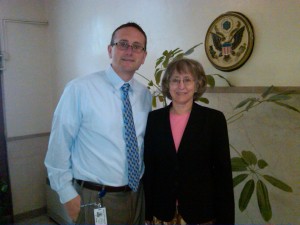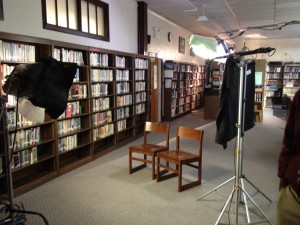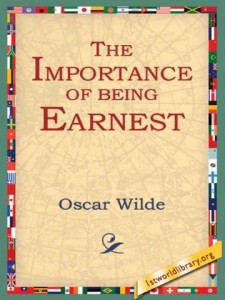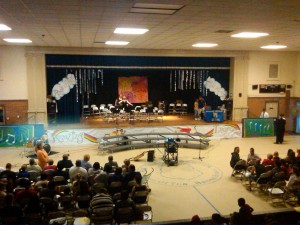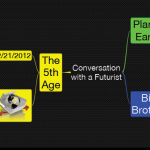This is less a blog post, but rather an open letter looking for help. I am not blaming anyone. I just need an example (s). Please, someone, show me the way. There has to be someone who defied the odds of their ZIP code.
I am the Principal of a recently designated “Focus” School by the State of New Jersey. According to the State’s Department of Education, a Focus School is, “a school that has room for improvement in areas that are specific to the school. As part of the process, focus schools will receive targeted and tailored solutions to meet the school’s unique needs. There are 183 focus schools.”
The designation for my particular school is, “Lowest Subgroup Performance: Schools whose two lowest performing sub groups rank among the lowest combined proficiency levels in the state. Schools in this category have an overall proficiency rate for these lowest performing sub groups of 29.2% or lower.”
Ironically, when I found out that we were designated as a Focus School, we were not given specifics. So, I really don’t know (other than lowest performing sub group) why we are designated. In the past, this type of Annual Yearly Progress (AYP) was determined by the students who were enrolled in the school prior to the start of the school year. I have heard, but cannot confirm, that the new designations were based on whoever took the test in the school, no matter how long they have attended. (For instance, my sister school RD Wood, a Priority School, has had over 200 transfer in/outs this year alone.)
As I looked at the breakdown of the state data, something began to really stick out. It seemed to be correlated with ZIP codes and performance. According to the NJDOE website, District Factor Group (DFG) designations were, “First developed in 1975 for the purpose of comparing students’ performance on statewide assessments across demographically similar school districts. The categories are updated every ten years when the Census Bureau releases the latest Decennial Census data.” The NJDOE explains that there are six variables that further assist in determining a DFG: “1) Percent of adults with no high school diploma 2) Percent of adults with some college education 3) Occupational status 4) Unemployment rate 5) Percent of individuals in poverty 6) Median family income.”
So, “A” is the lowest designation and B, C, D, E etc. are progressively more affluent districts. You get the point. As I looked over the report, I found some really interesting details.
Of the 75 Priority Schools, 81% were categorized as DFG A, and 100% were designated as Title 1 Schools.
Of the 183 Focus Schools, 54% were categorized as DFG A, and 70% were designated as Title 1 Schools.
Of the 112 Reward Schools, 4% (5 schools) were DFG A, and 32% were designated as Title 1 Schools.
(Please note that the vast majority of schools in NJ will not be found in any of these categories, and at the time of this blog, do not have a designation.)
Still, I’m not blaming anyone, but why so few DFG-A’s that were designated as Reward Schools? Why are so many Priority and Focus Schools?
I am looking for examples of schools who, despite their socio-economic status, achieve high test scores on a regular basis. I have some criteria, though, because I do not want to play the shell game. These schools must fit this criteria:
– Is not a magnet school
– Has not recently been “redistricted”
– Is not a school for the “gifted”
– Maintains the same type of demographics (sub groups included) from the onset of being identified as low performing (failing to make AYP for multiple years) to achieving a status reflecting success (Reward or not on the Focus or Priority list).
See, I am cautious when presented with examples of schools who overcame insurmountable odds to achieve high levels of success on high stakes testing in their state because there are usually a few asterisks. Under NCLB, schools who were not meeting Annual Yearly Progress (AYP) were designated as such. Some districts, with the best intentions, decided to spread the wealth (or in this case, non-wealth) and re-district. I cannot blame them. Some districts changed the nature of the school and once again, I cannot blame them. They probably discovered Chicago’s Nettlehorst School, a “national example of a turnaround,” and decided to follow suit. Did you know that the poverty rate at Nettlehorst School went from 83% in 1999 to 34% in 2010? (Read more about this here)
What about the teachers? There is a drum beat pertaining to teacher effectiveness sounding in our media, dinner table conversations, and administrative meetings. I am sure that effectiveness can be improved, but I wonder about the vast throngs of teachers who do teach in DFG- A schools. Is it statistically possible that in the number of priority and focus schools in New Jersey that they have the least effective teachers? I can speak for my teachers and tell you that they integrate technology, best practices, and research-based methods, attended the same Universities as their counterparts in wealthier districts, and do all this day after day and year after year because, well, they think they can make a difference. Not to mention, they were “guided” by the State of New Jersey through the now defunct Collaborative Assessment and Planning for Achievement (CAPA).
So I ask you, I beg you, and I plead for your assistance. Can somebody please send me examples of schools that have defied the odds and have achieved sustained success on their state’s high stakes assessment? *Please remember, no shell games.
Resources:
Overview of Current Designation: http://education.state.nj.us/broadcasts/2012/APR/11/6423/Memo%20re%20accountability%20and%20Regional%20Achievement%20Centers.pdf
List of Priority, Focus and Reward Schools in NJ:
http://www.nj.gov/education/reform/PFRschools/Priority-Focus-RewardSchools.pdf
Nettlehorst Article:
http://www.chicagomag.com/Chicago-Magazine/January-2011/Nettelhorst-Elementary-Schools-Remarkable-Turnaround
Changing demographics at Nettlehorst:
http://iirc.niu.edu/School.aspx?source=About_Students&source2=Educational_Environment&schoolID=150162990252370&level=S





